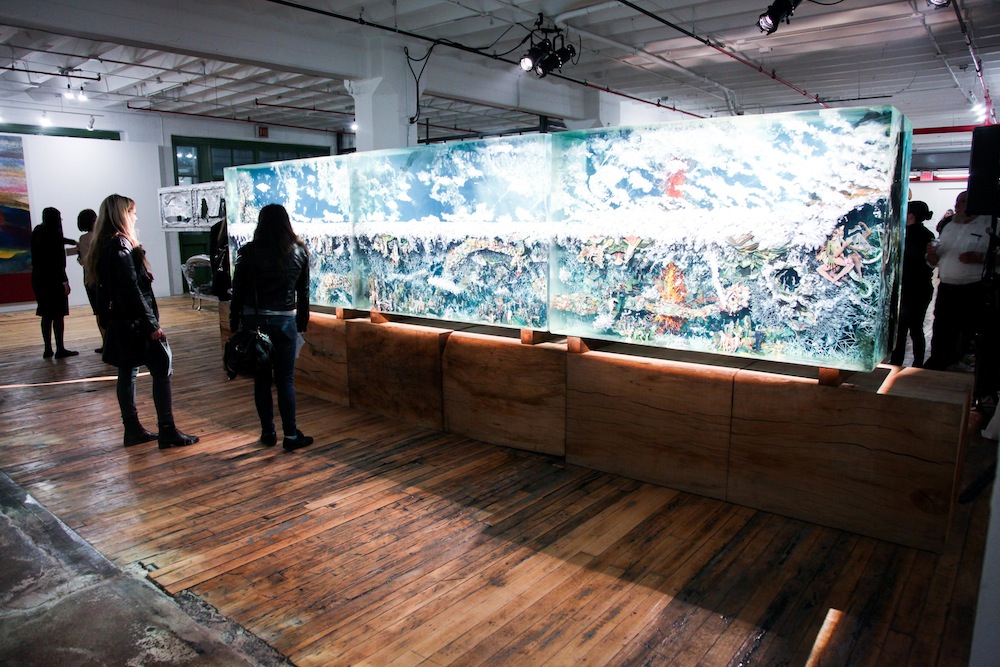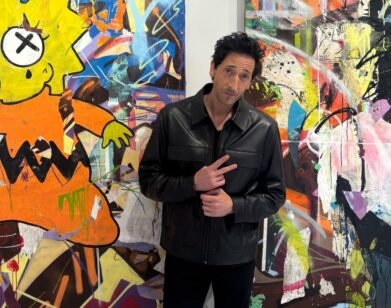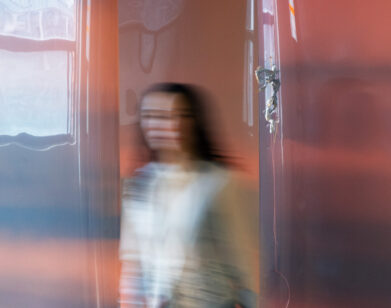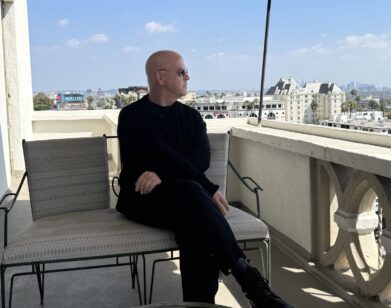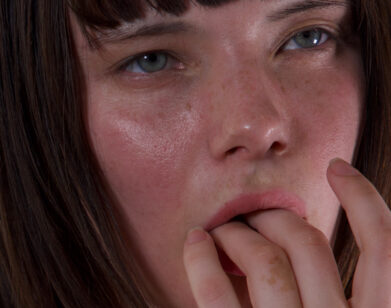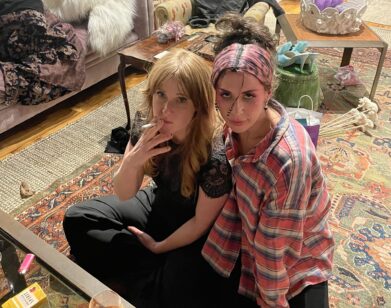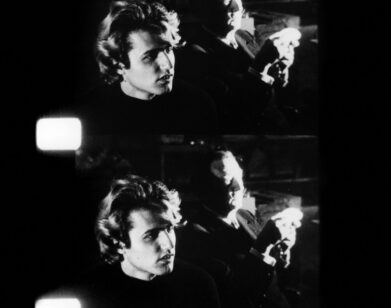The Unsinkable Art World
Around this time last year, Hurricane Sandy struck New York, causing massive, well-documented devastation. The art world was hit particularly hard. Water rose up to Chelsea, flooding galleries and decimating irreplaceable archives and artworks. Red Hook, a Brooklyn neighborhood dense with artists’ studios, was almost completely submerged. Artists lost their space, their tools, and their work. But no one gave up—or even considered that an option.
The Dedalus Foundation’s expansive show “Come Together: Surviving Sandy, Year 1,” up now at Industry City, commemorates the tragedy—but more importantly, serves as a reminder that the aspirations of New Yorkers, art-world denizens and not, won’t be easily washed away. “I didn’t want to make the show somber,” says curator Phong Bui, who is the founder of the non-profit arts and culture journal The Brooklyn Rail. “We’re celebrating the resilient spirit of artists.”
The exhibition, which brings together over 300 painters, photographers, sculptors, and video and performance artists, does not tout a message of solemn remembrance. Few pieces directly address the hurricane or its aftermath. The logo imparts a droll undertone: a pigeon carrying a limp rat, playing on a dove and olive branch. “It’s very spooky. And it’s so New York!” Bui laughs, describing the emblem as something that makes one “laugh and cry.”
About half the artists represented were affected by the storm, including a few prominent ones like Dustin Yellin and Z. Behl; Bui found out about many lesser-known artists who were impacted through word of mouth. “I had a very short time to execute this,” says Bui, who wasn’t able to obtain names of stricken artists through institutions. “I wrote to everybody… mostly artists in Red Hook and Greenpoint. By talking to them, they told me who else [had had their studios] destroyed.” In a matter of two months, Bui compiled almost 100 names. But he didn’t want “Coming Together” to comprise only Sandy victims. “‘I think that would be depressing,'” Bui recalls he told Jack Flam, the president and CEO of the Dedalus Foundation. “Why not [make the additional] 50 percent other artists in the art world?” So, Bui recruited established figures like sculptor Tom Doyle and Chuck Close to push the theme of solidarity. “That’s a key word in the show: solidarity,” he describes.
The sprawling entirety spans four floors in the 100,000 square foot former manufacturing complex Industry City in Sunset Park, Brooklyn. The exhibiting space, Bui points out, is three times that of the Whitney Museum’s. “It’s a new promised land of the artist’s community,” explains Bui. “Cheap rent, big space.” This is the first show the Dedalus Foundation, which was founded in 1981 by the abstract expressionist painter Robert Motherwell, has had in the building. Bui, with the Dedalus Foundation, is planning future poetry readings, film screenings, panels and other events for the complex.
Industry City, with open space and large windows, in its own way feels like one big six-floor artists’ studio—more welcoming and intimate than a museum or gallery space. It’s so vast that viewers have no choice but to take in works slowly, appreciating all that’s been produced and conserved in Sandy’s aftermath, and all that could be created in years to come.
“COME TOGETHER: SURVIVING SANDY, YEAR 1” IS UP THROUGH DECEMBER 15 AT INDUSTRY CITY, LOCATED AT 220 36TH STREET IN SUNSET PARK, BROOKLYN. FOR MORE ON THE EXHIBITION AND THE DEDALUS FOUNDATION, VISIT ITS WEBSITE.

